What is Outdoor Lighting?
Outdoor lighting is a crucial aspect of any outdoor living space. It not only provides essential lighting for safety reasons but also enhances the visual appeal of an area. This type of lighting can be used to brighten up the space, create a soft glow, or add accent lighting to highlight specific features of the area.
There are many different types of outdoor lighting fixtures available, each offering unique benefits. For example, solar panel lights are environmentally friendly and energy-efficient, while LED lights provide bright lighting while consuming less power. Incandescent bulbs are still popular because of their warm and familiar glow, and outdoor string lights can be used to create a festive ambiance for entertaining guests.
When considering which type of outdoor lighting to use, it is essential to think about the time of day the area will be used and how the lighting will affect the surrounding environment. Bright lighting may be necessary for safety reasons at night, but for a more relaxing atmosphere, a softer glow or ambient landscape lighting may be a better option.
It is also important to consider the color temperature of the light and the effects it will have on the area. White lights give a more modern feel, while warm yellow or amber lights can create a cozy and inviting atmosphere.
Whether it’s for a small patio or a large outdoor entertaining space, outdoor lighting can transform an area into a beautiful and functional living space. From overhead lighting to accent lights, there are countless options to choose from to create the perfect ambiance for any outdoor space.
The Benefits of Installing Outdoor Patio Lights
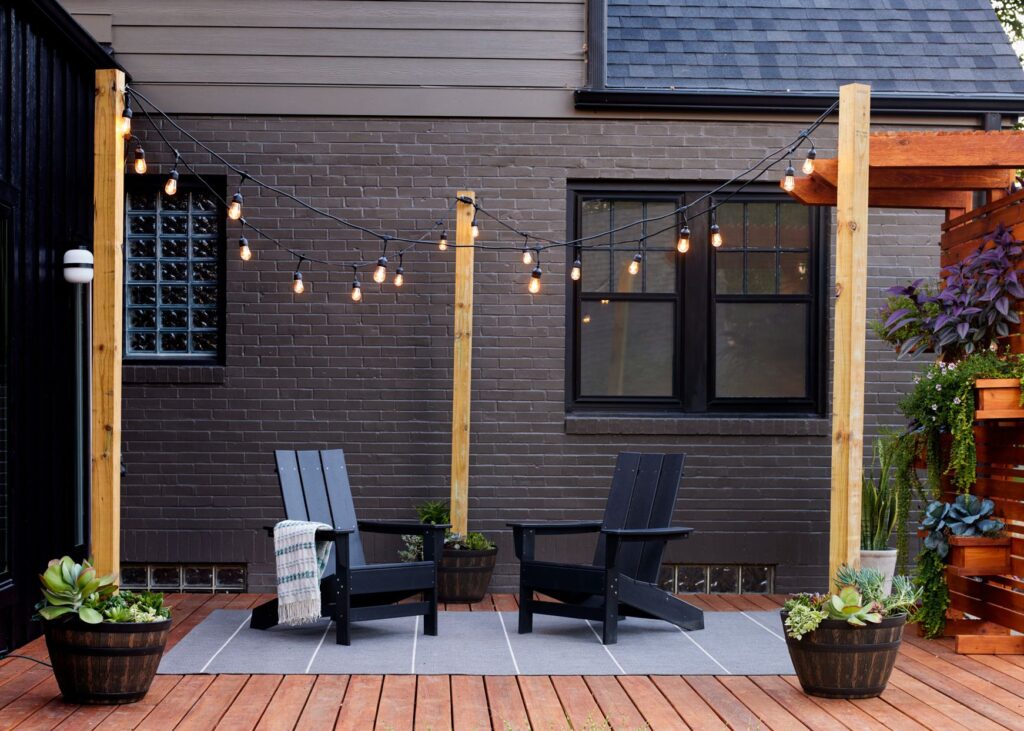
Outdoor patio lights can be a great addition to your home, offering a range of benefits. Not only do they enhance the aesthetics of your outdoor space, but they also make it more functional, safe, and comfortable. Let’s take a closer look at some of the benefits of installing outdoor patio lights.
Firstly, outdoor patio lights can improve the overall look of your home. They come in a variety of shapes, sizes, and designs, allowing you to choose fixtures that complement your home’s style. Whether you opt for modern LED lights or more traditional incandescent bulbs, patio lights can help create an ambiance that suits your taste and personality.
Secondly, outdoor patio lights can help you maximize the use of your outdoor space. With the right lighting, you can enjoy your patio even after the sun goes down. Whether you’re entertaining guests or simply lounging outside with a book, outdoor lights can help you create a comfortable and inviting atmosphere.
Thirdly, outdoor patio lights can enhance the safety and security of your home. Well-lit outdoor spaces can deter burglars and intruders, making your home less of a target for crime. They can also improve visibility, reducing the risk of accidents and falls in dimly-lit areas.
Fourthly, outdoor patio lights can be installed to highlight certain features of your property. Whether it be a water feature, landscaping, or an outdoor kitchen, the right lighting can make these elements of your outdoor space stand out and look even more impressive.
Lastly, outdoor patio lights can improve the quality of life of your family. Spending time outside in a bright and beautiful environment can help reduce stress and improve mood. It can also provide a great opportunity for bonding and quality time with loved ones.
In conclusion, installing outdoor patio lights can be a smart investment for a variety of reasons. Not only do they add to the aesthetic appeal of your home, but they can also make it more functional, safe, and inviting. With the range of lighting options available on the market today, it’s easy to find the perfect fixtures to suit your needs and budget.
Types of Outdoor Lights

When it comes to outdoor lighting, there are many different types of lights to choose from depending on your needs. Here are some of the most popular types of outdoor lights:
1. LED Lights: LED lights use less energy and can last longer than other types of bulbs, making them a popular choice for outdoor lighting. They are also versatile, available in a variety of colors and shapes.
2. Solar Lights: Solar lights are powered by the sun and require no electrical wiring, making them a great option for those who want to save on energy costs and reduce their carbon footprint. They come in a wide range of styles, including string lights, path lights, and spotlights.
3. Incandescent Bulbs: While incandescent bulbs are not as energy-efficient as LEDs, they are still commonly used for outdoor lighting due to their warm, inviting glow and wide availability.
4. Halogen Bulbs: Halogen bulbs are a type of incandescent bulb that produce brighter light and are often used for outdoor floodlights and security lights.
5. Motion-Activated Lights: These lights are equipped with sensors that detect movement and turn on automatically. They are often used for security purposes and can help deter potential burglars.
6. String Lights: String lights come in a variety of styles, from traditional white bulbs to colorful and shaped LEDs. They are a popular choice for creating a cozy and romantic ambiance in outdoor living spaces.
7. Path Lights: Path lights are low-to-the-ground fixtures that can help guide guests safely to your front door or create a beautiful landscape design feature.
8. Flood Lights: These lights are designed to illuminate large areas and are often used for security purposes. They are available in a variety of styles, including halogen, LED, and solar.
Whether you’re looking to create a warm and inviting atmosphere for outdoor entertaining or to improve the security of your home, there is a type of outdoor light that can meet your needs. Consider your goals and lighting requirements when choosing the right type of outdoor light for your space.
Incandescent Bulbs
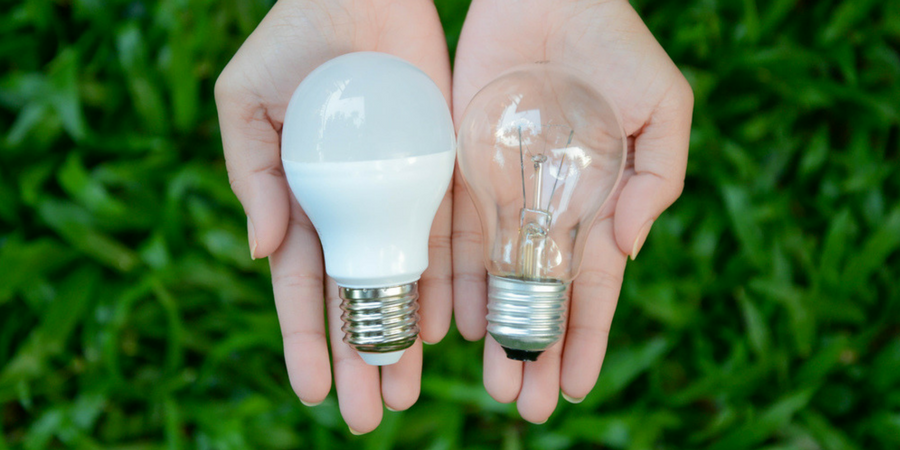
When it comes to outdoor lighting, incandescent bulbs have remained a popular option despite the emergence of more energy-efficient bulbs like LEDs. One of the main reasons for this is the warm, inviting atmosphere they create with their soft glow.
Incandescent bulbs work by using a tungsten filament that heats up when an electric current passes through it. As the filament heats up, it emits a warm, yellowish light that is perfect for creating a cozy ambiance on an outdoor patio.
Another advantage of incandescent bulbs is their affordability and wide availability. They can easily be found at most hardware stores and come in a variety of shapes and sizes, making them a convenient option for those who need to replace bulbs in their existing outdoor light fixtures.
However, one disadvantage of incandescent bulbs is their energy consumption. They consume more electricity than energy-efficient bulbs like LEDs, resulting in higher energy bills. Additionally, incandescent bulbs have a shorter lifespan compared to LEDs, which means they will need to be replaced more frequently.
Despite these drawbacks, incandescent bulbs can still be a great option for outdoor lighting, particularly if you value a warm, cozy atmosphere over energy efficiency. They are also a great option for entertaining spaces where you want to create a comfortable ambiance for your guests.
Ultimately, the decision of which type of bulb to use for your outdoor patio will depend on your personal preferences, budget, and the amount of energy you want to save. Incandescent bulbs may not be the most energy-efficient choice, but they can still provide a beautiful and inviting atmosphere that cannot be replicated with other types of bulbs.
LED Bulbs
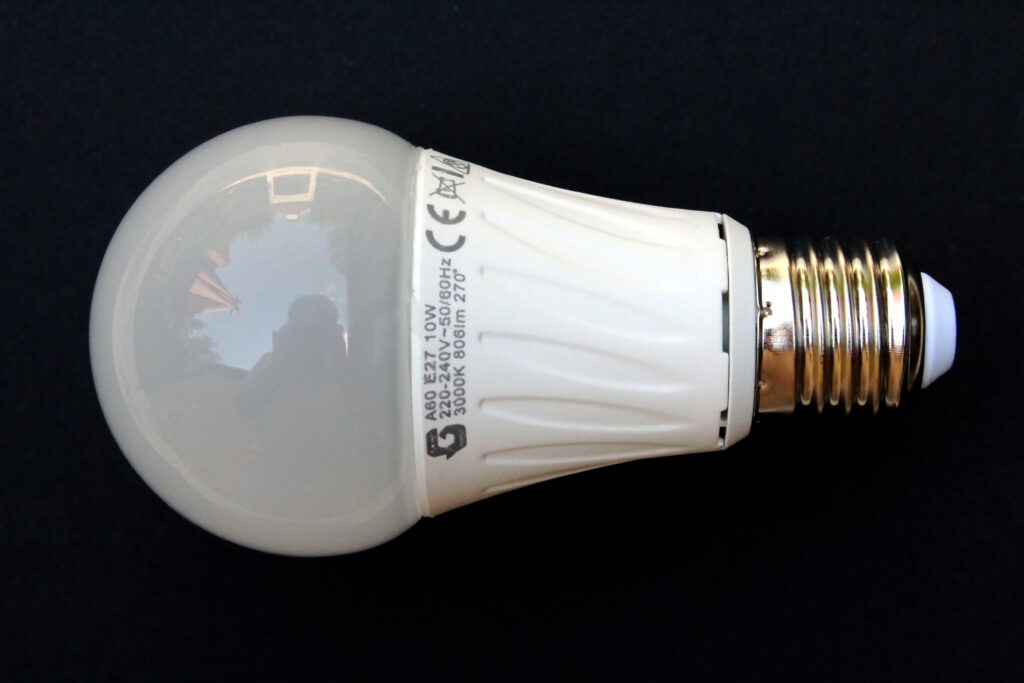
LED bulbs have become increasingly popular for lighting outdoor patios in recent years. This is largely due to their energy efficiency and long lifespan, making them a cost-effective and eco-friendly option.
LED bulbs work by using a semiconductor to create light. They consume significantly less energy than incandescent bulbs, making them a great option for those looking to reduce their energy bills. They also have a much longer lifespan, which means they will need to be replaced less frequently, resulting in less waste.
Another advantage of LED bulbs is their versatility. They come in a range of color temperatures, from warm yellow hues to cooler blue tones, making it easy to create the perfect ambiance for your outdoor patio. LED string lights are a popular choice for creating a soft, welcoming glow, while LED spotlights can be used to highlight particular features or areas of your outdoor living space.
One potential disadvantage of LED bulbs is their upfront cost. While they may be more expensive than incandescent bulbs, the long lifespan and energy savings make them a worthwhile investment over time. Additionally, as technology improves and becomes more widely adopted, LED bulbs are becoming more affordable and accessible.
Another consideration when choosing LED bulbs for your outdoor patio is the source of power. While traditional LED bulbs are powered by electricity, solar-powered LED bulbs are also available. These bulbs are equipped with a solar panel that collects energy from the sun during the day to power the light at night, making them an even more eco-friendly option.
In conclusion, LED bulbs are a great choice for those looking to light their outdoor patios in an energy-efficient, eco-friendly, and versatile way. While they may have a higher upfront cost, the long lifespan and energy savings make them a worthwhile investment in the long run.
Solar Panels and Solar Lights
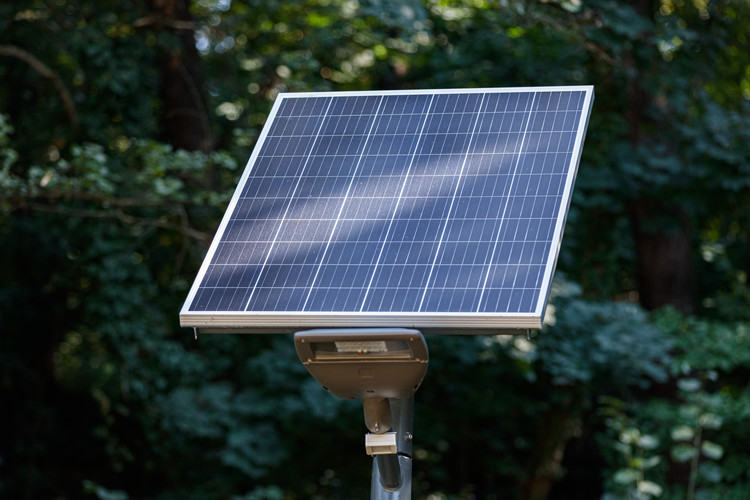
Solar technology has become increasingly popular and accessible in recent years, and for good reason. Not only does it provide an eco-friendly alternative to traditional electricity, but it can also save you money on your energy bills in the long run. One area where solar technology is particularly useful is in outdoor lighting, whether it’s for your backyard, patio, or garden.
Solar panels are a key component of solar-powered outdoor lighting. These panels are made up of photovoltaic cells that absorb sunlight and convert it into electricity. This electricity is then stored in a rechargeable battery, which powers the light when the sun goes down.
One of the major benefits of solar-powered lights is that they require no wiring or outside power source. This makes them ideal for outdoor areas where traditional electricity is not readily available or may be difficult to install. Solar lights are also incredibly versatile, coming in a wide range of styles and sizes to suit any outdoor space.
Another advantage of solar lights is the fact that they are low maintenance. Once installed, they require little to no upkeep, as they are self-sustaining and rely solely on the power of the sun. This means that they won’t contribute to your energy bill and will require no electricity to operate.
However, it’s important to note that solar panels and solar lights do have their limitations. They rely on sunlight to operate, which means that they may not be as effective in areas with limited sunlight or during times of the year with less daylight. Additionally, they may not provide as bright or intense a light as traditional wired lighting options.
Overall, solar panels and solar lights are a great option for those looking to save money and reduce their environmental impact. They are easy to install, require little maintenance, and provide an eco-friendly and convenient way to light up your outdoor space. Whether you’re looking for accent lighting for your garden, patio, or backyard, solar lights are a practical and eco-friendly option that are worth considering.
Ambient Light vs Artificial Light
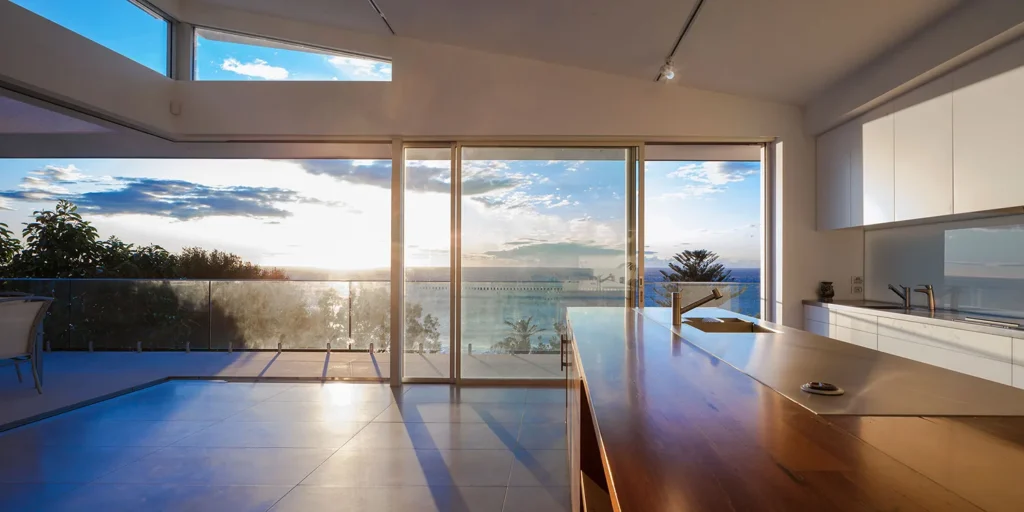
Lighting is an essential aspect of any space, indoor or outdoor. It creates a certain mood and ambiance that can affect our mood and productivity. There are two types of lighting: ambient light and artificial light. Each type has its own benefits and drawbacks, and it’s important to know the differences between them.
Ambient light is a natural light source that comes from the sun or the moon. It radiates evenly in all directions, and it’s what we experience on a day-to-day basis. It’s the light that illuminates a room during the daytime before we turn on any artificial lights. Ambient light is often preferred because it’s softer, more natural, and provides a subtle warmth that makes a space feel cozier.
On the other hand, artificial light comes from sources like light bulbs, fluorescent tubes, and LED lights. They are used to supplement ambient light in a space or replace it altogether. One of the main advantages of artificial light is that it can be controlled and customized to fit the needs of any environment. Color temperature and degree of brightness can be adjusted to create a desired atmosphere or to suit different activities like reading or working on a computer.
Artificial light can also be beneficial for safety reasons, ensuring that there is enough light for people to see hazards in the dark. In addition, artificial light is useful for indoor spaces where there is limited access to natural light, like a basement or windowless room.
However, the downside to artificial light is that it can cause eye strain or headaches if the intensity of the light is too bright. It also produces a glare that can be annoying and distracting for people. Moreover, artificial light can interfere with our natural circadian rhythm, affecting our ability to sleep and wake up naturally.
In conclusion, both ambient and artificial light have their own unique qualities that make them suitable for different situations. The key is to strike a balance between the two so that it’s not too overpowering or distracting. Whether you’re trying to create a cozy atmosphere in your living room or a productive workspace in your home office, understanding the differences between ambient and artificial light can help you make the right choices for your space.
String Lights and White Lights
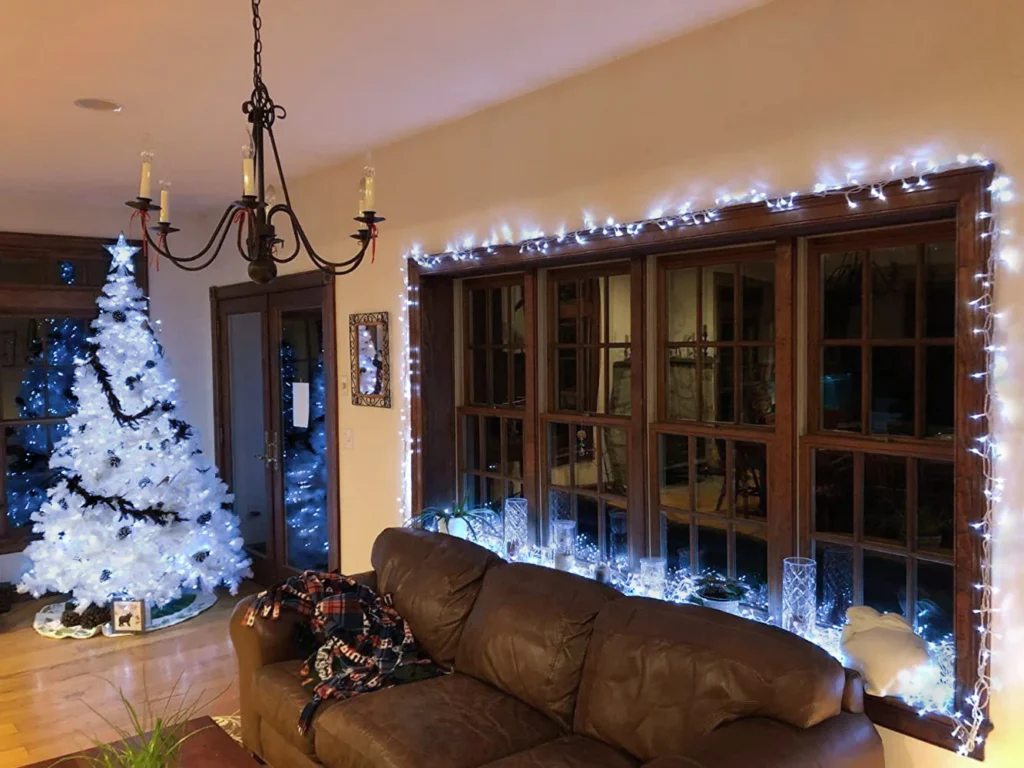
Outdoor patio lighting is an essential component of any outdoor living space. String lights and white lights are two types of outdoor lighting that can add an extra touch of ambiance to your patio.
String lights are a popular choice for outdoor lighting, and for good reason. They come in a variety of sizes and shapes, making it easy to find the perfect style that fits your aesthetic. They can be strung across your patio to create a magical ambiance that is perfect for outdoor dining or entertaining guests. String lights are also a great way to delineate different zones within your patio space, such as a sitting area or a dining area.
One of the benefits of string lights is that they can be powered by electricity or solar panels. Electric string lights are usually more powerful and provide a brighter light, while solar string lights are an eco-friendly option that can be powered by the sun. To get the most out of your string lights, you can opt for a timer or sensor that automatically turns them on at dusk and off at dawn.
White lights are another popular option for outdoor lighting. They provide a bright, clear light that is perfect for illuminating large areas of your patio. They are typically used for overhead lighting, such as on a covered patio or pergola. When it comes to selecting white lights, you’ll have a few different options. You can choose from incandescent or LED bulbs, with LED being the more energy-efficient choice. You’ll also need to decide on the brightness of the white lights, with options ranging from soft to bright.
Whether you opt for string lights or white lights, outdoor lighting can help transform your patio into a magical and inviting space. By picking the right lighting for your space, you can create a comfortable outdoor living area that will be perfect for entertaining guests or relaxing after a long day.
Different Kinds of Patio Lights
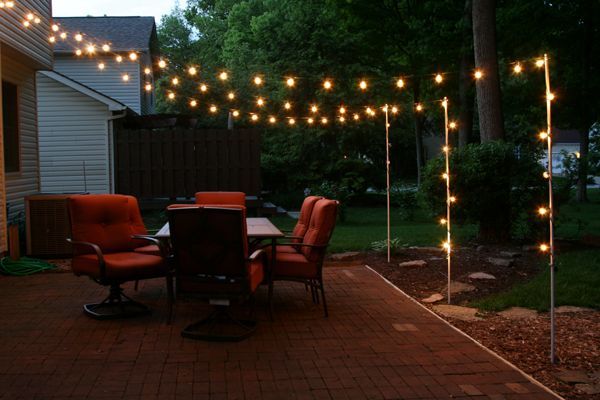
When it comes to creating a beautiful outdoor space, lighting plays a crucial role. Not only does it enhance the ambiance of your patio, but it also adds an element of safety and security. With so many different kinds of patio lights available, it can be overwhelming to choose the right one for your space. Here are some of the most popular types of patio lights to consider:
1. String Lights: String lights are perfect for creating a soft, ambient glow on your patio. They are incredibly versatile, with options for different shapes, sizes, and colors. You can wrap them around trees, drape them over your pergola, or hang them along the edges of your patio. They can be powered by electricity or solar panels, making them an eco-friendly option.
2. Solar Lights: If you’re looking for an energy-efficient and hassle-free option, solar lights are the way to go. They come in a variety of designs, from pathway lights to stake lights, and are perfect for illuminating your walkways or outdoor seating areas. They are powered by the sun and require no wiring or electricity.
3. Wall Lights: Wall lights are a great option for illuminating specific areas of your patio, such as your outdoor kitchen or bar area. They can be mounted directly onto your house or onto a fence, providing ample lighting while giving your space a more polished look.
4. Spotlights: If you’re looking for a more dramatic lighting option, spotlights are a great choice. They can be used to highlight specific features of your patio, such as trees or sculptures, or used for added security around your home. They come in different brightness levels and can be adjusted to different angles.
5. Lanterns: Lanterns are a classic and timeless lighting option for your patio. They give off a soft, warm light and come in a variety of styles from traditional to modern. They can be placed on tables or hung from trees to create a cozy outdoor atmosphere.
In conclusion, choosing the right patio lights can make a huge difference in the overall look and feel of your outdoor space. Whether you opt for string lights, solar lights, wall lights, spotlights, or lanterns, the lighting you choose should not only enhance the ambiance but also provide safety and security. Consider the size, shape, and style of your patio when choosing the right lighting for you.
Deck Lights
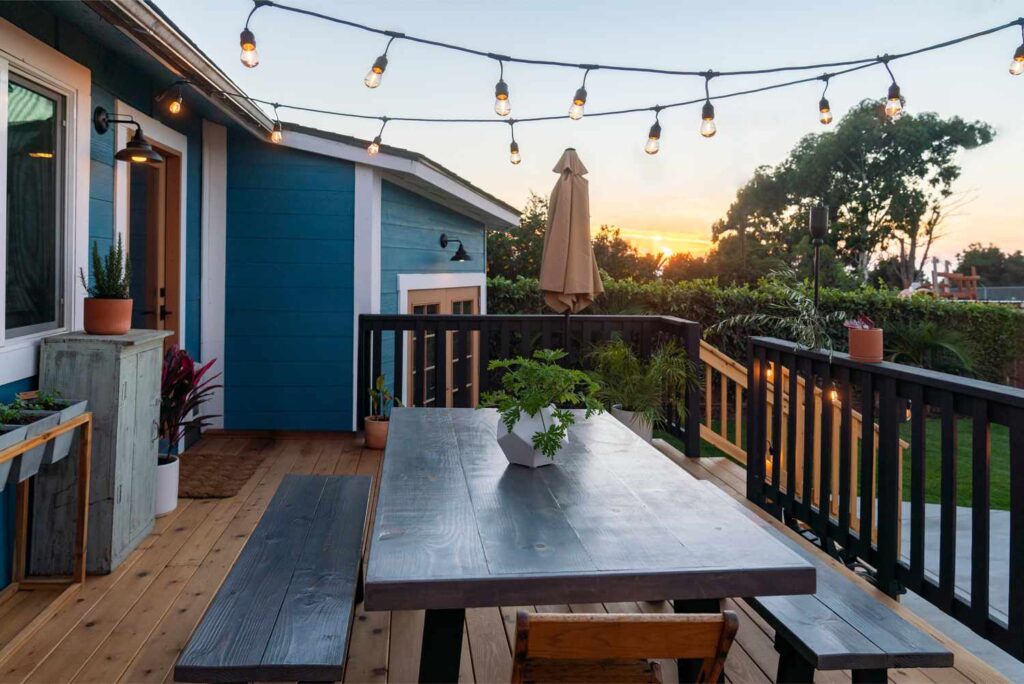
Deck lights are an excellent way to bring a warm and inviting ambiance to your outdoor living space. Not only do they create a cozy setting, but they can also improve your visibility and provide a measure of safety when traversing your deck.
There are several types of deck lights to choose from, such as incandescent bulbs, LED bulbs, and solar-powered options. Incandescent bulbs are the traditional choice and provide a warm, inviting light that can highlight your deck’s natural beauty. LED bulbs are energy-efficient and come in a variety of colors and brightness levels, allowing you to customize your deck’s ambiance. Solar-powered deck lights require no wiring and are an ideal eco-friendly choice, absorbing the sun’s energy to provide illumination throughout the night.
When it comes to installing deck lights, there are several options available. You can choose from post lights, rail lights, and step lights to provide an illuminating and attractive touch to your deck. Post lights attach to the top of deck posts and can add a beautiful finishing touch to your deck design. Rail lights attach to your deck railing and can create a softer, more hazed ambiance. Step lights offer added visibility to help avoid any potential tripping hazards, and they can also add an elegant finishing touch to your deck stairs.
Finally, it’s important to consider the maintenance and upkeep of your deck lights. While incandescent bulbs require regular replacement, LED bulbs can last up to 20 years, making them a low-maintenance choice. Solar-powered deck lights don’t require any upkeep, as they automatically absorb energy from the sun and turn on at night.
With so many options available, deck lights are an excellent choice for creating a warm, inviting ambiance in your outdoor space. By choosing the right type of light, configuration, and maintenance options, you can easily achieve your desired atmosphere and provide added visibility and safety for your deck.
Overhead Lighting

When it comes to illuminating outdoor spaces, there are several lighting options available, including overhead lighting. Overhead lighting refers to any lighting fixture that is mounted to a ceiling, such as a pendant light or chandelier. This type of lighting can provide a bright and focused light source that can be beneficial in certain outdoor areas.
One advantage of overhead lighting is that it can provide ample brightness for larger outdoor spaces. For example, if you have a large deck or patio area, a single overhead light fixture can illuminate the entire area, making it easier to navigate in the dark. Additionally, overhead lighting can provide a more concentrated light source than other types of lighting, making it a great choice for task lighting, such as when working on a project in an outdoor workshop or kitchen.
When choosing overhead lighting for your outdoor space, there are several factors to consider. First, consider the size of the space you need to illuminate. For larger areas, you may need more than one fixture to provide adequate lighting. Next, consider the style and design of the fixture. There are many different styles of overhead lighting available, from sleek and modern designs to more traditional and ornate options.
It’s also important to consider the brightness of the fixture. Depending on the time of day and the activities you plan to do in the space, you may want a brighter or softer light. Additionally, you may want to consider the color temperature of the lightbulbs used in the fixture. Warm white light (around 2700-3000K) can create a cozy and inviting atmosphere, while cooler white light (around 4000-5000K) can provide a more modern and energizing feel.
Finally, it’s important to think about safety when installing overhead lighting. Be sure to choose fixtures that are rated for outdoor use and can withstand exposure to the elements, such as rain and wind. Additionally, be sure to install the fixture correctly and securely to prevent any accidents or damage.
Overall, overhead lighting can be a valuable addition to any outdoor space. With a variety of styles and designs available, it’s easy to find a fixture that will fit your specific needs and enhance the overall ambiance of your outdoor living area.
Accent Lighting
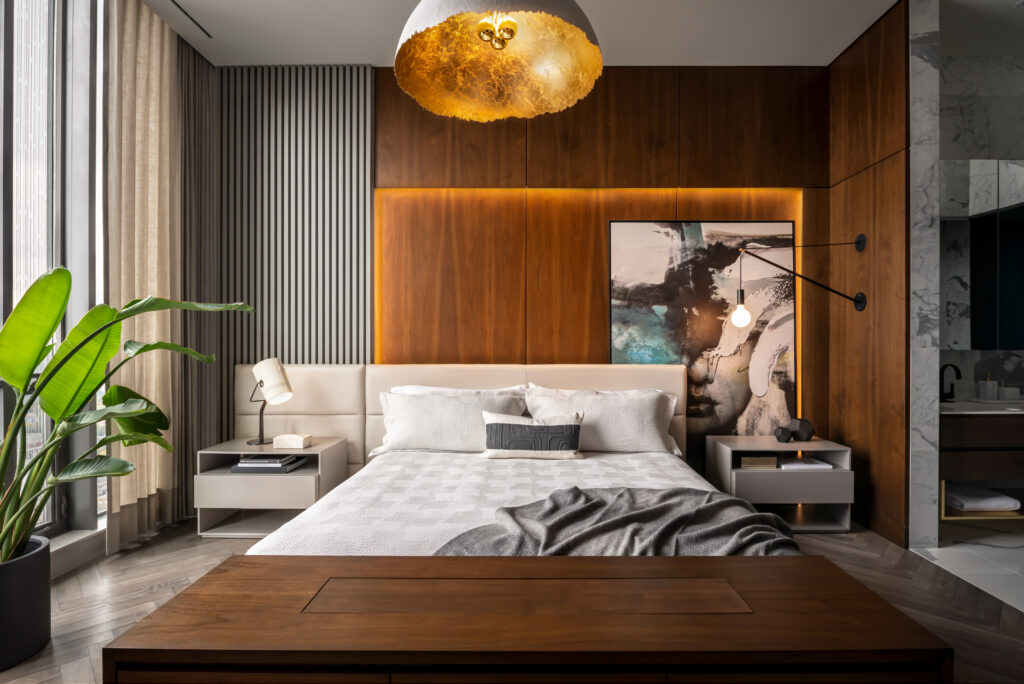
Accent lighting is a type of lighting that is used to draw attention to specific features or objects in a space. It is often used in conjunction with other types of lighting, such as ambient or task lighting, to create a visually interesting and dynamic space. Accent lighting can be used indoors or outdoors, and there are many different types of fixtures and bulbs that can be used to achieve the desired effect.
One popular type of accent lighting is the spotlight. Spotlights are directional fixtures that can be aimed at a specific feature, such as a piece of artwork or a plant. They are often used in galleries or museums to highlight specific pieces, but they can also be used in residential spaces to draw attention to a particular object or area. Spotlights can use a variety of bulbs, including incandescent, halogen, or LED, depending on the brightness and color temperature desired.
Another popular type of accent lighting is the wall sconce. Wall sconces are fixtures that are mounted on the wall and can provide both uplight and downlight. They are often used in hallways or living rooms to create a warm and cozy atmosphere. Wall sconces can use a variety of bulbs, including LED bulbs that can change color temperature or be dimmable.
String lights are a type of accent lighting that are often used outdoors. They can be hung from trees or strung across a patio or deck to create a soft and romantic atmosphere. String lights can use a variety of bulbs, including LED bulbs that can change color or pulse to the beat of music.
In summary, accent lighting is a versatile and important aspect of lighting design. It can be used to highlight specific features or objects in a space, and can be achieved with a variety of fixtures and bulbs. Whether indoor or outdoor, accent lighting can add depth, interest, and texture to a space, making it a key component of any lighting plan.
Soft Glow Lighting

Soft glow lighting is a popular choice for creating a warm and cozy atmosphere in any indoor or outdoor space. It is a form of ambient lighting that produces a soft, diffuse light that gently illuminates the surroundings. Soft glow lighting can be achieved in many ways and is often used for relaxation, entertainment, or simply creating a comfortable and inviting atmosphere.
One of the most common ways to achieve soft glow lighting is by using dimmer switches on overhead lights. This allows you to adjust the brightness of the light and create a softer, more relaxing atmosphere. Another option is to use lampshades to diffuse the light and create a warm and cozy feeling. Table lamps and floor lamps are perfect for this, as they can be moved around the room and adjusted to suit your needs.
Another option for soft glow lighting is to use candles and lanterns. These create a beautiful flickering light that is both calming and comforting. Scented candles can also add an extra layer of relaxation to the atmosphere, with calming and soothing scents such as lavender or vanilla.
For outdoor spaces, soft glow lighting can be achieved through the use of string lights and lanterns. String lights can be hung across a patio or deck to create a soft and romantic atmosphere, while lanterns can be placed on the ground or hung from trees to add a touch of magic to the surroundings.
When it comes to creating soft glow lighting, it’s important to consider the color temperature of the bulbs you’re using. Warm white or yellow bulbs are ideal for this kind of lighting, as they create a cozy and inviting atmosphere. Cooler bulbs, on the other hand, can create a more clinical and sterile feeling.
In conclusion, soft glow lighting is a beautiful and effective way to create a warm and cozy atmosphere in any indoor or outdoor space. Whether you prefer using dimmer switches, lampshades, candles, or string lights, there are many different ways to achieve this type of lighting. So why not try it out for yourself and see how it can transform your living or entertaining spaces into a relaxing and inviting oasis?
Beam of Light (Spotlight)
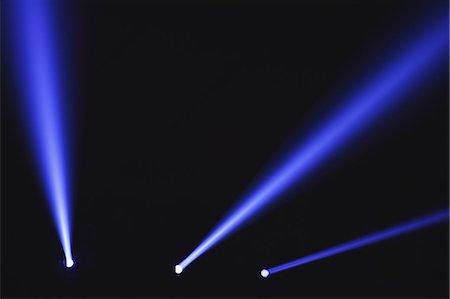
A beam of light is a type of spotlight that provides a focused and concentrated light source. This type of lighting is commonly used to highlight or accentuate specific objects or areas and is often found in theaters, museums, and galleries where the goal is to draw attention to certain pieces or exhibits.
One of the key benefits of a beam of light is its precision. Unlike other types of lighting that provide a general wash of light, a spotlight can be directed with pinpoint accuracy. This allows for a more dramatic and impactful lighting effect that can truly bring an object or space to life.
Beam of light spotlights come in various shapes and sizes, and can be fitted with different types of bulbs depending on the desired effect. LED bulbs, for example, are energy-efficient and long-lasting, making them ideal for installations that require near-constant use. Halogen bulbs, on the other hand, provide a brighter and warmer light that can be used to create a cozy and inviting atmosphere.
In addition to providing visual interest, beam of light spotlights can also be used for practical purposes. For example, they can be used as a security measure, illuminating dark corners of a property to deter potential intruders. They can also be used to light up pathways or walkways for safety reasons, or to highlight potential hazards such as steps or low-hanging obstacles.
When using a beam of light spotlight, it’s important to consider both the angle and intensity of the light. Tilting the light source too far in any one direction can create harsh shadows and unflattering lighting effects, while positioning it too close to an object can cause it to become washed out or glare. Finding the right balance between angle and intensity is key to creating a visually appealing lighting effect that draws the eye to where it’s meant to be.
Step Lights

Step lights are a great addition to any outdoor space, providing both functional and aesthetic benefits. These small, low-voltage lights are typically built into steps or staircases to illuminate them for safety purposes. But they can also add a beautiful, subtle glow to any outdoor space.
Step lights come in a variety of styles and sizes, and can be used in a variety of ways. Some models are designed to be recessed into the step to provide a clean, sleek look. Others are mounted on the surface of the step with a small housing that blends in with the surroundings. Some step lights can be adjusted or dimmed, allowing you to customize the ambiance of your outdoor space.
One of the primary benefits of step lights is safety. Adding lighting to your steps can prevent accidents and injuries by making your outdoor space easier to navigate in the dark. This is particularly important for outdoor stairs and pathways that are frequently used, but may not be well-lit.
In addition to safety, step lights can also add a beautiful, ambient glow to your outdoor space. They can be used to create an inviting atmosphere that enhances the overall aesthetic of your property. Whether you’re looking to create a cozy, intimate ambiance for outdoor dining or a dramatic effect for an entertaining space, step lights can be customized to suit your needs.
Another benefit of step lights is energy-efficiency. Many models use LED bulbs, which consume very little energy compared to traditional incandescent bulbs. This means that they can be left on for extended periods of time without significantly increasing your energy bill.
Overall, step lights are a versatile and practical addition to any outdoor living space. With a range of styles and customization options available, you can easily find a set of step lights that suits your aesthetic preferences and functional needs.




